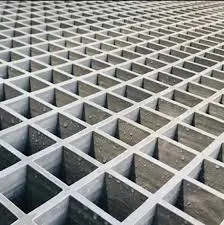
-
 Afrikaans
Afrikaans -
 Albanian
Albanian -
 Amharic
Amharic -
 Arabic
Arabic -
 Armenian
Armenian -
 Azerbaijani
Azerbaijani -
 Basque
Basque -
 Belarusian
Belarusian -
 Bengali
Bengali -
 Bosnian
Bosnian -
 Bulgarian
Bulgarian -
 Catalan
Catalan -
 Cebuano
Cebuano -
 China
China -
 China (Taiwan)
China (Taiwan) -
 Corsican
Corsican -
 Croatian
Croatian -
 Czech
Czech -
 Danish
Danish -
 Dutch
Dutch -
 English
English -
 Esperanto
Esperanto -
 Estonian
Estonian -
 Finnish
Finnish -
 French
French -
 Frisian
Frisian -
 Galician
Galician -
 Georgian
Georgian -
 German
German -
 Greek
Greek -
 Gujarati
Gujarati -
 Haitian Creole
Haitian Creole -
 hausa
hausa -
 hawaiian
hawaiian -
 Hebrew
Hebrew -
 Hindi
Hindi -
 Miao
Miao -
 Hungarian
Hungarian -
 Icelandic
Icelandic -
 igbo
igbo -
 Indonesian
Indonesian -
 irish
irish -
 Italian
Italian -
 Japanese
Japanese -
 Javanese
Javanese -
 Kannada
Kannada -
 kazakh
kazakh -
 Khmer
Khmer -
 Rwandese
Rwandese -
 Korean
Korean -
 Kurdish
Kurdish -
 Kyrgyz
Kyrgyz -
 Lao
Lao -
 Latin
Latin -
 Latvian
Latvian -
 Lithuanian
Lithuanian -
 Luxembourgish
Luxembourgish -
 Macedonian
Macedonian -
 Malgashi
Malgashi -
 Malay
Malay -
 Malayalam
Malayalam -
 Maltese
Maltese -
 Maori
Maori -
 Marathi
Marathi -
 Mongolian
Mongolian -
 Myanmar
Myanmar -
 Nepali
Nepali -
 Norwegian
Norwegian -
 Norwegian
Norwegian -
 Occitan
Occitan -
 Pashto
Pashto -
 Persian
Persian -
 Polish
Polish -
 Portuguese
Portuguese -
 Punjabi
Punjabi -
 Romanian
Romanian -
 Russian
Russian -
 Samoan
Samoan -
 Scottish Gaelic
Scottish Gaelic -
 Serbian
Serbian -
 Sesotho
Sesotho -
 Shona
Shona -
 Sindhi
Sindhi -
 Sinhala
Sinhala -
 Slovak
Slovak -
 Slovenian
Slovenian -
 Somali
Somali -
 Spanish
Spanish -
 Sundanese
Sundanese -
 Swahili
Swahili -
 Swedish
Swedish -
 Tagalog
Tagalog -
 Tajik
Tajik -
 Tamil
Tamil -
 Tatar
Tatar -
 Telugu
Telugu -
 Thai
Thai -
 Turkish
Turkish -
 Turkmen
Turkmen -
 Ukrainian
Ukrainian -
 Urdu
Urdu -
 Uighur
Uighur -
 Uzbek
Uzbek -
 Vietnamese
Vietnamese -
 Welsh
Welsh -
 Bantu
Bantu -
 Yiddish
Yiddish -
 Yoruba
Yoruba -
 Zulu
Zulu
Innovative Applications and Benefits of Fiberglass Grid in Modern Construction
The Versatility and Applications of Fiberglass Grid
Fiberglass grid, often referred to as fiberglass mesh or grid reinforcement, has emerged as a revolutionary material in various industries due to its unique properties and versatility. This composite material, primarily made from finely woven strands of fiberglass, offers exceptional strength, durability, and resistance to environmental factors, making it a preferred choice for numerous applications.
What is Fiberglass Grid?
Fiberglass grid consists of woven fiberglass fibers that are often coated with a polymer to enhance their performance characteristics. The construction of fiberglass grid materials allows for lightweight yet robust structural integrity, making them ideal for reinforcing surfaces, providing support, and ensuring longevity in a variety of projects. Their design typically incorporates a grid structure, which enhances the load-bearing capacity while allowing for flexibility in application.
Key Features of Fiberglass Grid
One of the most significant advantages of fiberglass grid is its outstanding resistance to corrosion and chemical damage. Unlike traditional materials such as steel, fiberglass does not rust, making it an optimal choice for applications in harsh environments, including chemical plants, marine settings, and construction in coastal regions. Additionally, fiberglass grids are UV resistant, ensuring their durability under prolonged sunlight exposure.
Another important feature is their lightweight nature. Fiberglass grid is significantly lighter than conventional materials, which reduces transportation costs and simplifies installation processes. This lightweight characteristic also enables engineers and architects to incorporate it into designs without adding unnecessary load to existing structures.
fiberglass grid

Furthermore, fiberglass grids exhibit excellent thermal insulation properties
. This makes them an effective solution for applications where temperature regulation is crucial, such as in building insulation or in the creation of climate-controlled environments.Applications of Fiberglass Grid
The applications of fiberglass grid are vast and varied. In the construction industry, it is widely used for reinforcing concrete slabs, walls, and pavements. The grid enhances load distribution, reducing the likelihood of cracking and extending the lifespan of surfaces subjected to heavy loads. Additionally, it is employed in the rehabilitation of existing structures, offering a modern solution to strengthen aging buildings without the need for extensive renovations.
In the realm of infrastructure, fiberglass grids find use in roadway and bridge construction. Their robust nature allows them to withstand heavy traffic and extreme weather conditions, making them a reliable choice for reinforcing highways and bridges. The use of fiberglass grids in these applications contributes to improved safety and extended operational life.
Moreover, fiberglass grids have found utility in the production of composite materials. By integrating fiberglass grids into plastic or resin matrices, manufacturers can create strong and lightweight composite structures suitable for aerospace, automotive, and marine applications. This innovation facilitates the development of high-performance materials that meet the demanding requirements of modern engineering.
Conclusion
In summary, fiberglass grid represents a significant advancement in material technology, offering a range of benefits including strength, durability, resistance to corrosion, and lightweight properties. Its wide array of applications across various industries highlights its versatility and effectiveness as a reinforcement solution. As technology continues to advance, it is likely that the use of fiberglass grid will expand further, paving the way for innovative applications that push the boundaries of what is possible in engineering and construction. Whether in supporting infrastructure or enhancing material performance, fiberglass grids are setting new standards in reliability and efficiency.
Latest news
-
Exploring the Benefits of Top Hammer Drifter Rods for Enhanced Drilling PerformanceNewsJun.10,2025
-
High-Precision Fiberglass Winding Machine for GRP/FRP Pipe Production – Reliable & Efficient SolutionsNewsJun.10,2025
-
FRP Pipes & Fittings for Shipbuilding - Corrosion-Resistant & LightweightNewsJun.09,2025
-
Premium FRP Flooring Solutions Durable & Slip-ResistantNewsJun.09,2025
-
Premium Fiberglass Rectangular Tanks Durable & Lightweight SolutionNewsJun.09,2025
-
Tapered Drill String Design Guide Durable Performance & UsesNewsJun.09,2025









